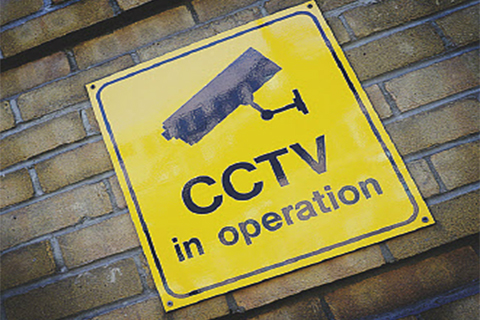The totalitarian future that George Orwell imagined in 1984 hasn’t come to pass, but video surveillance – especially by corporations – has become increasingly commonplace. Visit the Eaton Centre or any popular shopping area in Toronto, for example, and chances are you’ll be caught on camera, and your image stored – at least temporarily – in computer memory. What happens to those images? Who sees them and what do they do with them?
Recently, Andrew Clement, a professor in the Faculty of Information, became curious about these questions. He knew that, under federal privacy guidelines, organizations that operate video cameras in public places are required to post signs indicating who runs the camera and the purpose of the surveillance, as well as contact information for members of the public. But very few of the cameras he noticed were accompanied by such signs. So he decided to investigate.
With a colleague and three graduate students, Clement collected information about 140 video camera installations in the Toronto area operated mostly by well-known retailers, restaurants and banks. Only 30 per cent of the surveillance operations had any signage, and not one fully complied with Ottawa’s privacy guidelines. (Clement has offered a $100 reward for anyone who finds a camera with the appropriate signage.)
What’s more, when researchers requested images of themselves that had been caught on camera, only a small minority of organizations responded within the 30 days required by the federal guidelines. Many didn’t respond at all – or were dismissive of the request. “I felt this called for action,” says Clement.
He soon discovered, however, that the Privacy Commissioner doesn’t have the power to issue fines. She can order a company to put up a sign or reduce the amount of time images are saved, but even these measures are open to court challenges. “The guidelines lack teeth,” says Clement. “Companies ignore them because there really are no consequences.”
So rather than file complaints, Clement opted for another approach. He is inviting Torontonians to help create an online map at surveillancerights.ca showing where video cameras are located in public areas, who operates them, and whether the appropriate signage is in place. His team has also created a “ticket” that people can download and hand out to non-compliant organizations and an Android app that allows people to access the map and file reports about cameras they find as they travel around the city.
In future, Clement hopes to create an “alert” for the app that causes your smartphone to buzz when you’re near a video camera. While he acknowledges that there are legitimate reasons for video security, Clement says cameras need to be operated within “a transparent regime of accountability and oversight,” which, in his view, is currently absent. “There needs to be public pressure and that comes through greater visibility and letting people know what their rights are,” he says.
Recent Posts
For Greener Buildings, We Need to Rethink How We Construct Them
To meet its pledge to be carbon neutral by 2050, Canada needs to cut emissions from the construction industry. Architecture prof Kelly Doran has ideas
U of T’s 197th Birthday Quiz
Test your knowledge of all things U of T in honour of the university’s 197th anniversary on March 15!
Are Cold Plunges Good for You?
Research suggests they are, in three ways





